Presentation
Bilateral brachialgia with upper limb weakness
Patient Data


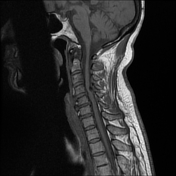

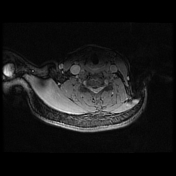

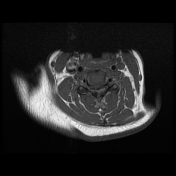


Loss of the cervical lordotic curve with the loss of signal in all discs.
Abnormally high T2 signal of the cervical cord opposite C4-5 level, with cervical cord being compressed between right paracentral disc protrusion and abnormal bilateral symmetrical posterior extradural lesion of low signal on all pulse sequences
C5-6 disc bulge with superimposed right paracentral disc protrusion and C6-7 disc bulge with superimposed central disc protrusion both markedly narrow the ventral subarachnoid space with compression of the cord as well as the neural exit foramina, abnormal cord signal is demonstrated opposite C5-6 level as well.
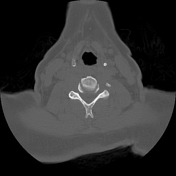

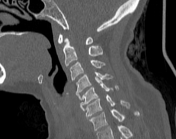

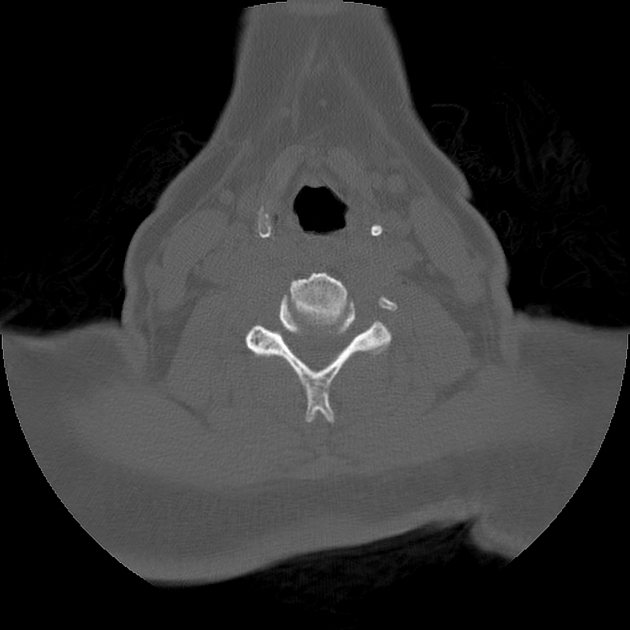
Complementary CT slices demonstrate bilateral nearly symmetrical calcified posterior extradural densities at the level of C4-5 corresponding to an ossified ligamentum flavum (OLF). Similar, but less severe, ossification is seen at the bilateral C3-4 ligamentum flavum. Multiple segmental mushroom-shaped ossified posterior longitudinal ligaments (OPLL) opposite the C5, C6 and C7 vertebral bodies. Focal ossification of the anterior longitudinal ligament (ALL) is demonstrated as well.
Case Discussion
A patient with a known history of hypoparathyroidism shows OLF, OPLL and ossified ALL with resultant cervical cord compressive myelopathy.




 Unable to process the form. Check for errors and try again.
Unable to process the form. Check for errors and try again.